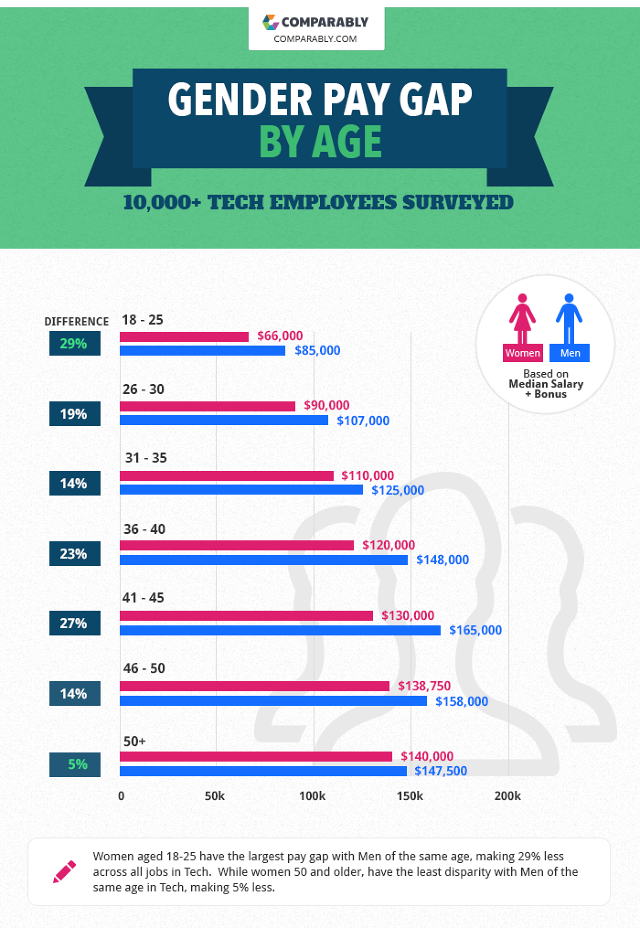A new report adds another layer to the increasingly complex issue of the gender-wage gap.
Comparably, a platform that provides anonymous data on compensation and insights into work culture did an analysis of the self-reported salaries of 10,000 workers in the tech industry.
Using algorithms to detect and remove false reports, Comparably’s researchers averaged the compensation data for all the jobs they have in tech, and broke it down by gender. They then broke the data out by education level, ethnicity, location, department, and age.
Overall, women earn less than men in every one of these categories with one small exception. Slicing the data by department revealed that both admin and executive women earn more than their male counterparts. At the admin level women’s pay was 7% higher and 2% higher at the executive level.
The executive pay bump in favor of women was recently explored by NYU Stern professor Lisa Leslie. An extensive study of high-potential female professionals at Fortune 500 companies, found that 8% of female leaders earned more than their male counterparts. Leslie believes this is driven by corporate diversity initiatives that value the contributions of their under-represented female cohort. And we know that the tech industry has been working hard to correct its lack of diversity for several years now.

Some additional surprises surfaced in Comparably’s study, most notably that women over 50 have the smallest pay disparity in the field (5%). While women just entering tech fields are doing so at an average of 29% less pay than entry-level men between the ages of 18 to 25.
Jason Nazar, Comparably’s CEO, says that number decreases in the 26-30 age group, and then dips further to 14% in the 31-35 group. “Then we see it starts to increase again among women 36-40 and 41-45 before going down again,” he notes.
This finding complements a study of the gender wage gap from PayScale. That report found, in general, salaries for men kept rising until they reached 50 to 55 years of age, and plateaued at a median salary of $75,000. Earnings for women top out at a median of $49,000, hitting that plateau between the ages of 35 and 40. This could be chalked up to the fact that women at this age may have taken a break from their career to care for children or elders.
Nazar says the smaller gap among the older workers could be influenced by two factors. “One is that group may be in more senior executive roles and have been working in tech longer,” he explains.
Even if a portion of these women left the workforce either full time or part time to focus on family, Nazar says, those over 50 years of age would likely be furthest removed from that. “Perhaps they now have closer parity with number of years of work experience,” he observes.

Another surprising finding was that there was the least disparity between Hispanic/Latino and Native American women and their male counterparts. At 10% and 2% respectively, this was much smaller than the largest wage gap of 26% between white women and men and the 24% pay gap between African-American women and men.
Nazar admits he really doesn’t know why and is not sure enough to make an educated guess. We don’t either. Based on analysis across all industries, African-American and Hispanic women have an even more significant gender-based wage gap. According to the National Partnership for Women and Families, the racial wage gap is wide not only when measured against men, but also compared to white women. Nationally, on average, African-American women are paid 60¢ and Latinas are paid 55¢ for every dollar paid to white, non-Hispanic men.
Fast Company , Read Full Story
(40)